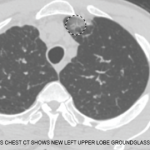Dr. Wechsler has been studying use of the IL-5 inhibitor mepolizumab in EGPA. “I think it makes sense to target the eosinophils directly as opposed to more broad bone-marrow suppression with cytotoxic agents like cyclophosphamide and azathioprine,” he said.
In a randomized trial published in 2017, 130 patients were randomized in nine countries to 300 mg of subcutaneous mepolizumab or placebo once a month for a year.10 Patients were, on average, 48 years old, and 40% of the subjects enrolled were men, with 20% having been ANCA positive at some point in their lives and taking 11–12 mg of corticosteroids per day.
Researchers found that 53% achieved remission for at least some period of time, compared to 7% for placebo (P<0.01). Remission at 36 and 48 weeks was 32% in the active group, and 3% in the placebo group (P<0.001).
Mepolizumab cut EGPA relapses in half. They found that 37% had asthma-related relapse, 35% had sino-nasal relapse and 43% had vasculitis relapse, Dr. Wechsler said.
More questions remain as research continues, he said. “Can anti-IL-5 therapy be used as first-line therapy?” he said. “Can it be used in acute EGPA, and can it be given without corticosteroids?”
Thomas R. Collins is a freelance writer living in South Florida.
References
- Jayne DRW, Bruchfeld AN, Harper L, et al. Randomized trial of C5a receptor inhibitor Avacopan in ANCA-associated vasculitis. J Am Soc Nephrol. 2017 Sep;28(9):2756–2767.
- De Groot K, Rasmussen N, Bacon PA, et al. Randomized trial of cyclophosphamide versus methotrexate for induction of remission in early systemic antineutrophil cytoplasmicantibody-associated vasculitis. Arthritis Rheum. 2005 Aug;52(8):2461–2469.
- Hazlewood GS, Metzler C, Tomlinson GA, et al. Non-biologic remission maintenance therapy in adult patients with ANCA-associated vasculitis: A systematic review and network meta-analysis. Joint Bone Spine. 2014 Jul;81(4):337–341.
- Azar L, Springer J, Langford CA, et al. Rituximab with or without a conventional maintenance agent in the treatment of relapsing granulomatosis with polyangiitis (Wegener’s): A retrospective single-center study. Arthritis Rheumatol. 2014 Oct;66(10):2862–2870.
- Guillevin L, Pagnoux C, Karras A, et al. Rituximab versus azathioprine for maintenance in ANCA-associated vasculitis. N Engl J Med. 2014 Nov 6;371(19):1771–1780.
- Karras A, Pagnoux C, Haubitz M, et al. Randomised controlled trial of prolonged treatment in the remission phase of ANCA-associated vasculitis. Ann Rheum Dis. 2017 Oct;76(10):1662–1668.
- de Joode AAE, Sanders JSF, Puechal X, et al. Long-term azathioprine maintenance therapy in ANCA-associated vasculitis: Combined results of long-term follow-up data. Rheumatology (Oxford). 2017 Nov 1;56(11):1894–1901.
- Jayne D, Blockmans D, Luqmaani R, et al. Efficacy and safety of belimumab in combination with azathioprine for remission maintenance in granulomatosis with polyangiitis and microscopic polyangiitis: A multicenter randomized, placebo-controlled study [abstract]. Arthritis Rheumatol. 2017;69(suppl 10).
- Puechal X, Pagnoux C, Baron G, et al. Adding azathioprine to remission-induction glucocorticoids for eosinophilic granulomatosis with polyangiitis (Churg-Strauss), microscopic polyangiitis, or polyarteritis nodosa without poor prognosis factors: A randomized, controlled trial. Arthritis Rheumatol. 2017 Nov;69(11):2175–2186.
- Wechsler ME, Akuthota P, Jayne D, et al. Mepolizumab or placebo for eosinophilic granulomatosis with polyangiitis. N Engl J Med. 2017 May 18;376(20):1921–1932.


